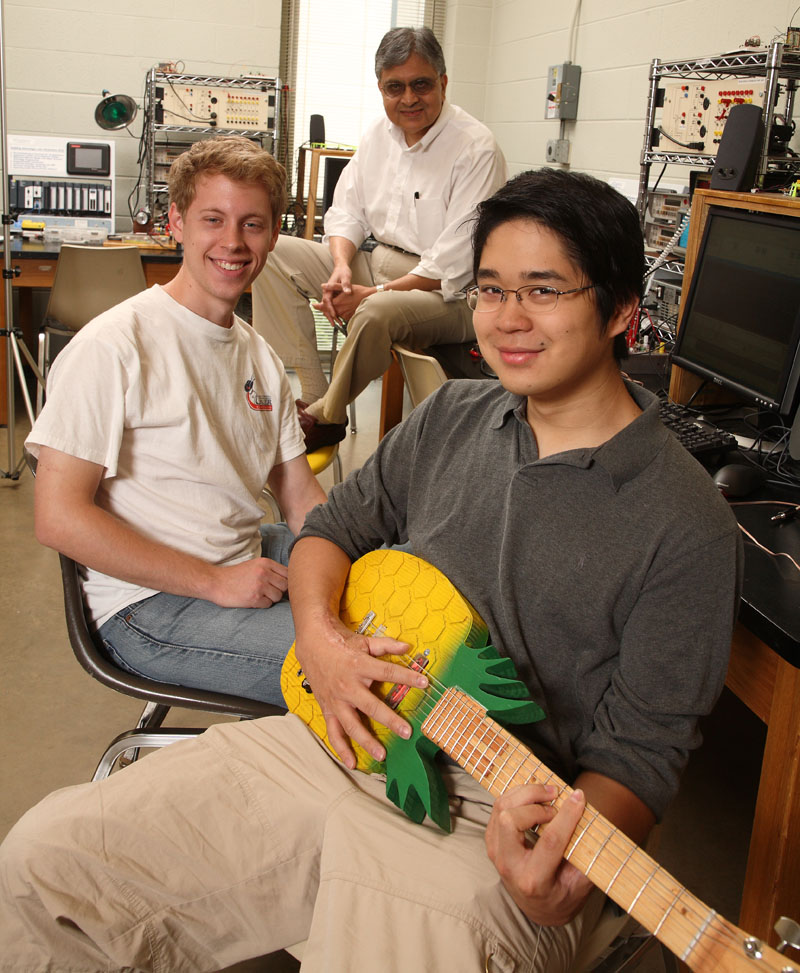July 15, 2008 — While the video game "Guitar Hero" is a sensation on Grounds, the students in University of Virginia mechanical engineering doctoral student Gavin Garner's Advanced Mechatronics class are less interested in playing a guitar than in building one. It is the hook that Garner uses to engage students in the creative process at the heart of mechatronics — the combination of mechanical engineering with such disciplines as electrical engineering, computer science, materials science and physics.
"Mechatronics is the new skill set for mechanical engineers," said Pradip Sheth, associate professor of mechanical engineering at U.Va.'s Engineering School. "Thanks to the proliferation of inexpensive microcontrollers in recent years, machines that were formerly passive can now be made intelligent."
Sheth developed the Engineering School's first mechatronics course in 2000 and oversees the department's courses and laboratory in this area. Mechatronics is now required for all mechanical engineering majors and Advanced Mechatronics is offered as an elective.
Garner is pursuing a doctorate in mechatronics under Sheth's guidance and was awarded a fellowship from the American Society of Mechanical Engineers for graduate students interested in engineering education.
Because it draws on so many disciplines, mechatronics is not an easy subject to teach, Garner said. "The challenge is not simply to expose students to concepts from different fields, but to help them understand how to combine them," he said. His response: make the course as hands-on as possible.
During the spring 2008 semester, he broke his class into teams and assigned students the task of building electric guitars, complete with special effects pedals. Students decided on the shapes they wanted to create and used computer numerical controls to cut them out of ordinary lumber. In the course of the project, they had to apply techniques from analog and digital electronics as well as learn how to use servo and stepper motors commonly found in factory automation systems.
"For students who listen to their iPods daily, music is a great outlet for conveying the possibilities of mechatronics," Garner said. Garner also challenged his students with the Mech-E-Mouse, an autonomous robot that they have to program to locate a piece of electronic cheese.
But both Sheth and Garner are careful to stress that mechatronics involves math and science as well as hands-on applications. "Our goal is to fuse theory and practice and to demonstrate to students that what they learn in the classroom is necessary to the creation of real machines," Sheth said.
Students seem to agree. "My mechatronics class gave me the chance to apply the programming I learned in computer science to physical objects," said William Smith, a recent graduate.
Classmate Patrick Ho added, "We gained the experience of working independently, with guidance from Gavin, on an independent project. It was a great opportunity to pursue ideas of our own and see how they worked out."
— By Charlie Feigenoff
Media Contact
Article Information
July 15, 2008
/content/mechatronics-rocks

